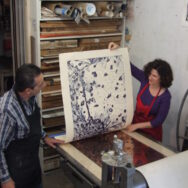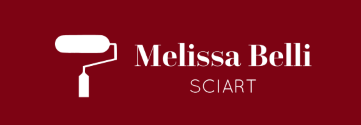About the Art

In my medical training I spent a considerable amount of time at the microscope, what I saw there never ceased to fill me with awe. I wished I could spend all day looking at cells. My fascination with cellular aesthetics, function, and their infinite complexity and enterprise nurtured my whole appreciation of life. In my art I seek to bring together my love for science and art. In printmaking I found a bridge. Printmaking is a very scientific, painstaking process and as such it was a great medium for scientific Art or SciArt.
The images I use as inspiration come from researchers who have kindly given me their pictures to create art from them. I have received image donations from Imperial College London, Marine Biological Lab at Woods Hole, MA, Cardiology department at Cambridge University, Oregon Health and Science University among others. I am eternally indebted to them for their generosity.
Everyone is affected by new discoveries in cell and tissue research. Advances in microscopy continue to reveal ever more intricate biological systems and wonderful images, but while fascinating, these visions are deemed too technical and indecipherable to most and are thus relegated to the pages of scientific journals and private laboratory spaces.
Dr. Belli’s art seeks to overcome this by “translating” the science to reveal the new frontiers of our biological microcosm. Not as photos or as technical illustrations but as objects of artistic inspiration. Belli has long sought an avenue through which to portray the mystery of animalcules developing complex systems of life; their organization, their intention. She is deeply interested in how we are completely unaware and separated in our consciousness from our own constituents which seem to have a consciousness of their own. Is our consciousness a sum of the trillions of cellular consciousnesses in our bodies?
The art pieces are done using intaglio printmaking techniques. Plates made of acrylic, zinc or copper are marked in various ways; dry point, soft ground and hard ground mediums are used for traditional etching and a variety of transfer photo-etching techniques are used to create the larger images. Once the plates are finished they are inked, wiped off excess, retouched for effect by adding or removing ink from particular areas and passed through the printing press in order to transfer the image to moist artistic printmaking paper. The paper is then dried and the print finished. It is a slow, painstaking process with multiple critical steps. Every print is different as you can never wipe the plate exactly the same and there is an element of monotyping in each plate achieved by the retouching process.
